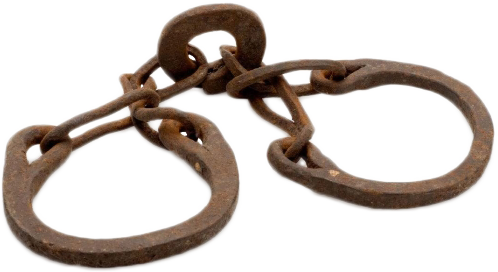Balikesir
KHHV | Hobby historian and Geneticist
★
- Joined
- Oct 22, 2024
- Posts
- 562
An opinion that is coursing online is that white people have never been slaves. This is easily disprovable 
In this post I'd like to talk about a lesser known slave trade. The Crimean Khanates slave market
The Crimean Khanate and the Nogai Horde. 2 Turkic states. Teamed up for 300 years to kidnap Slavic people and sent them to various places


 en.m.wikipedia.org
en.m.wikipedia.org

 en.m.wikipedia.org
en.m.wikipedia.org
They were usually shipped to the Ottoman Empire. The Ottomans would then reship the lesser ones to the Middle East.
The women were serving in the Harems, the men, as warriors




 en.m.wikipedia.org
en.m.wikipedia.org

This reign of slavery would end when the Russian Empire annexed the region in 1783

 en.m.wikipedia.org
en.m.wikipedia.org

 en.m.wikipedia.org
en.m.wikipedia.org
Here are the prices. Only wealthy people could afford slaves
The Ottomans banned slavery in 1847. This didn't stop slavery entirely. Some nobles kept selling and buying slaves in the black market

In this post I'd like to talk about a lesser known slave trade. The Crimean Khanates slave market
The Crimean Khanate and the Nogai Horde. 2 Turkic states. Teamed up for 300 years to kidnap Slavic people and sent them to various places

Crimean Khanate - Wikipedia

Nogai Horde - Wikipedia
They were usually shipped to the Ottoman Empire. The Ottomans would then reship the lesser ones to the Middle East.
The women were serving in the Harems, the men, as warriors
Estimates of the number of people affected vary: Polish historian Bohdan Baranowski assumed that the 17th-century Polish–Lithuanian Commonwealth (present-day Poland, Lithuania, Latvia, Estonia, Ukraine, and Belarus) lost an average of 20,000 yearly and as many as one million in total from 1474 to 1694.[6] Mikhail Khodarkhovsky estimates that 150,000 to 200,000 people were abducted from Russia in the first half of the 17th-century.[7]
These human trade goods were mostly sold on to the Ottoman Empire, although some remained in Crimea. Slaves and freedmen formed approximately 75% of the Crimean population.[
The 17th century Ottoman writer and traveller Evliya Çelebi estimated that there were about 400,000 slaves in the Crimea but only 187,000 free Muslims.[4
One Russian woman, Roxelana, became prominent in this environment. She would later be called Hürem Sultan. The wife of Suleman the MagnificentThe human losses during the raids in Eastern Europe were significant. According to partial statistics and fragmentary estimates, nearly 2 million Russians, Ukrainians, and Poles were taken into slavery by the Crimean Tatars from 1468 to 1694.[25] In the first half of the 17th century alone, an estimated 150 to 200 thousand people were taken into slavery from the territory of the Moscow State. These figures do not take into account those who were killed during the attacks.[

Roxelana - Wikipedia
In one of their raids the Tatars burned down MoscowBorn in Ruthenia (then an eastern region of the Kingdom of Poland, now Rohatyn, Ukraine) to a Ruthenian Orthodox family, she was captured by Crimean Tatars during a slave raid and eventually taken via the Crimean trade to Constantinople, the Ottoman capital.[3]
Crimean Khan Devlet I Giray burnt down Moscow during the 1571 campaign. Contemporaries counted up to 80,000 victims of the Tatar invasion in 1571, with 150,000 Russians taken as captives.[17] Ivan the Terrible, having learnt that Crimean Khanate army was approaching Moscow, fled from Moscow to Kolomna with his oprichniks.[
This reign of slavery would end when the Russian Empire annexed the region in 1783
After the Azov campaigns of Peter I in the 18th century, the raids became smaller and were mostly carried out in the Dnieper region, the Azov region, and the Don, by both the Tatars and the Cossacks in both directions.[28]
The territory of the Crimean Khanate was annexed by the Russian Empire on 19 April [O.S. 8 April] 1783.[1] Russia had wanted more control over the Black Sea, and an end to the Crimean slave trade, and as such, waged a series of wars against the Ottoman Empire and its Crimean vassal.

Annexation of the Crimean Khanate by the Russian Empire - Wikipedia
Most Slavic slaves were imported to the Muslim world through the border between Christian and Islamic kingdoms where castration centres were also located instead of the direct route. From there they were sent into Islamic Spain and other Muslim-ruled regions especially North Africa.

Slavery in the Ottoman Empire - Wikipedia
Here are the prices. Only wealthy people could afford slaves
The most expensive slaves were those between 10 and 35 years of age, with the highest prices for European virgin girls 13–25 years of age and teenage boys. The cheaper slaves were those with disabilities and sub-Saharan Africans. Prices in Crete ranged between 65 and 150 "esedi guruş" (see Kuruş). But even the lowest prices were affordable to only high income persons. For example, in 1717 a 12-year-old boy with mental disabilities was sold for 27 guruş, an amount that could buy in the same year 462 kg (1,019 lb) of lamb meat, 933 kg (2,057 lb) of bread or 1,385 L (366 US gal) of milk. In 1671 a female slave was sold in Crete for 350 guruş, while at the same time the value of a large two-floor house with a garden in Chania was 300 guruş.
The Ottomans banned slavery in 1847. This didn't stop slavery entirely. Some nobles kept selling and buying slaves in the black market
Last edited:
















